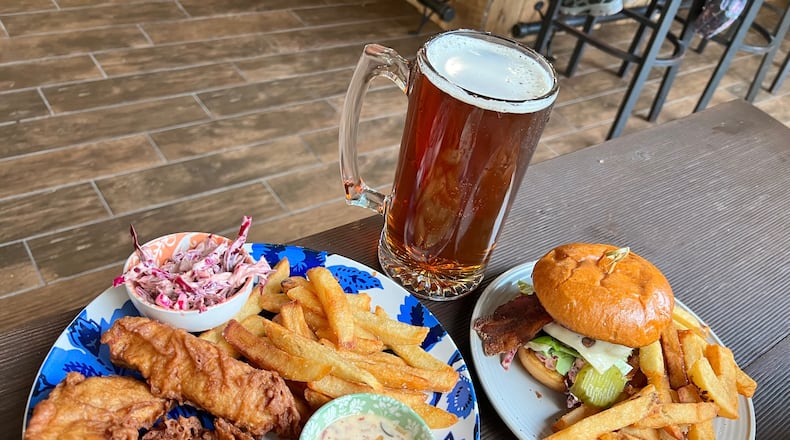Recently, Forbes Advisor took on the arduous task of distilling a wide variety of factors into a matrix to rank cities and answer the question: where are the best cities in the U.S. right now for young professionals to live in and our region took the fourth spot of the 100 most populous metro areas in the United States.
The methodology Forbes Advisor implemented was based on 12 metrics that had corresponding weights and examined them against data for the 100 most populous metro areas in the U.S. across four categories — employment and pay, housing affordability, cost of living and lifestyle.
Credit: Tom Gilliam
Credit: Tom Gilliam
The last category — cost of living and lifestyle — considers median resident age, along with entertainment, fitness, and food and drink establishments per capita. Dayton scored a 95.4 out of 100.
The author of the article, Jamela Adam, noted that our metro ranked 16th for most food and drink establishments per 100,000 residents, “offering no shortage of options to unwind and indulge after a long day.”
Sixteenth.
That’s jaw-dropping, if you stop and think about it. That statistic speaks volumes about the number of options and choices we have when it comes to where to direct our dining dollars.
But what defines a community when it comes to its food and flavors?
I would posit that its independent restaurants do.
Independent, locally owned restaurants across the country are serving up the history, dishes and flavors that you can’t find when you leave town. They are catalysts for connection serving as magnetic hubs that bring neighbors together one meal at a time, connecting us in shared space and flavor that are a part of our local culture.
Sociologists argue that restaurants serve an even more important role, that of the “third place.” Ray Oldenburg in his landmark book “The Great Good Place” wrote that the first place is the home, the second is the workplace and the third place are public anchors of community life that foster interaction with others and are key to healthy communities. This theory is so powerful that major businesses put it into practice and training. Most notably, Starbucks has a third place policy on its website.
There’s no doubt that a community’s restaurants play a key role in weaving the fabric that defines it. But many of those places have continued to struggle post pandemic, especially the locally owned independents. They simply do not have the resources to grow like national chains do and they are not able to weather poor performing weeks and months.
Across the board owners of well known locally owned restaurants have shared with me that it is increasingly difficult to compete with a restaurant landscape locally that is so saturated with chains on every corner and where often out of convenience people choose to spend their dollars.
Each month there are new names added to the list of closures of local restaurants that aren’t able to stay afloat. Last week I wrote that in the restaurant business the only constant is change, and while that is true we risk losing some of the restaurants that define us.
More than a decade ago in 2012 consumer research firm NPD Group shared a report showing independent restaurants were losing market share to chains at a startling rate. That year 7,158 independent restaurants had closed while chains had added 4,511 locations with 87 percent of the visit losses over a three-year period hitting independent restaurants. That trend has only sharply continued.
As the chainification of America continues to gobble up even more market share today thanks to customers who clamor for familiarity we risk losing our local flavor.
Credit: Alexis Larsen
Credit: Alexis Larsen
On Aug. 7, Lily’s owner Emily Mendenhall posted on Facebook: “Woof, this is a post I have not wanted to write. But I feel like it is better to write it than to not write it. We don’t want to be a business who closes and has people say ‘wow, we wish we would have known they were struggling so we could have helped!’ So, I’m writing this post to say we are struggling, bad, and we need help.”
I know firsthand that hers is not the only restaurant in the Oregon District that is struggling, Mendenhall is just the one sharing publicly this week.
As a community we choose where to direct our dollars and what happens going forward is the restaurant landscape that we will ultimately choose for better or worse.
If you are looking for a list of locally owned establishments to visit, the Miami Valley Restaurant Association’s member list (https://dineoutdayton.com/members) is a great one to reference to figure out where to eat next.
Let me be clear, I am not anti-chain. I enjoy my meals served up by corporate America just like the next person, but I am definitely pro mom and pop. I am very calculating when it comes to making sure the majority of my dollars are spent at local dining establishments.
It’s something that we all need to be cognizant of if we are going to make sure we continue to “eat good in the neighborhood.”
Dayton Eats looks at the regional food stories and restaurant news that make mouths water. Share info about your menu updates, special dinners and events, new chefs, interesting new dishes and culinary adventures. Do you know of new exciting format changes, specials, happy hours, restaurant updates or any other tasty news you think is worth a closer look at? E-mail Alexis Larsen at alexis.e.larsen@hotmail.com with the information and we will work to include it in future coverage.
About the Author





